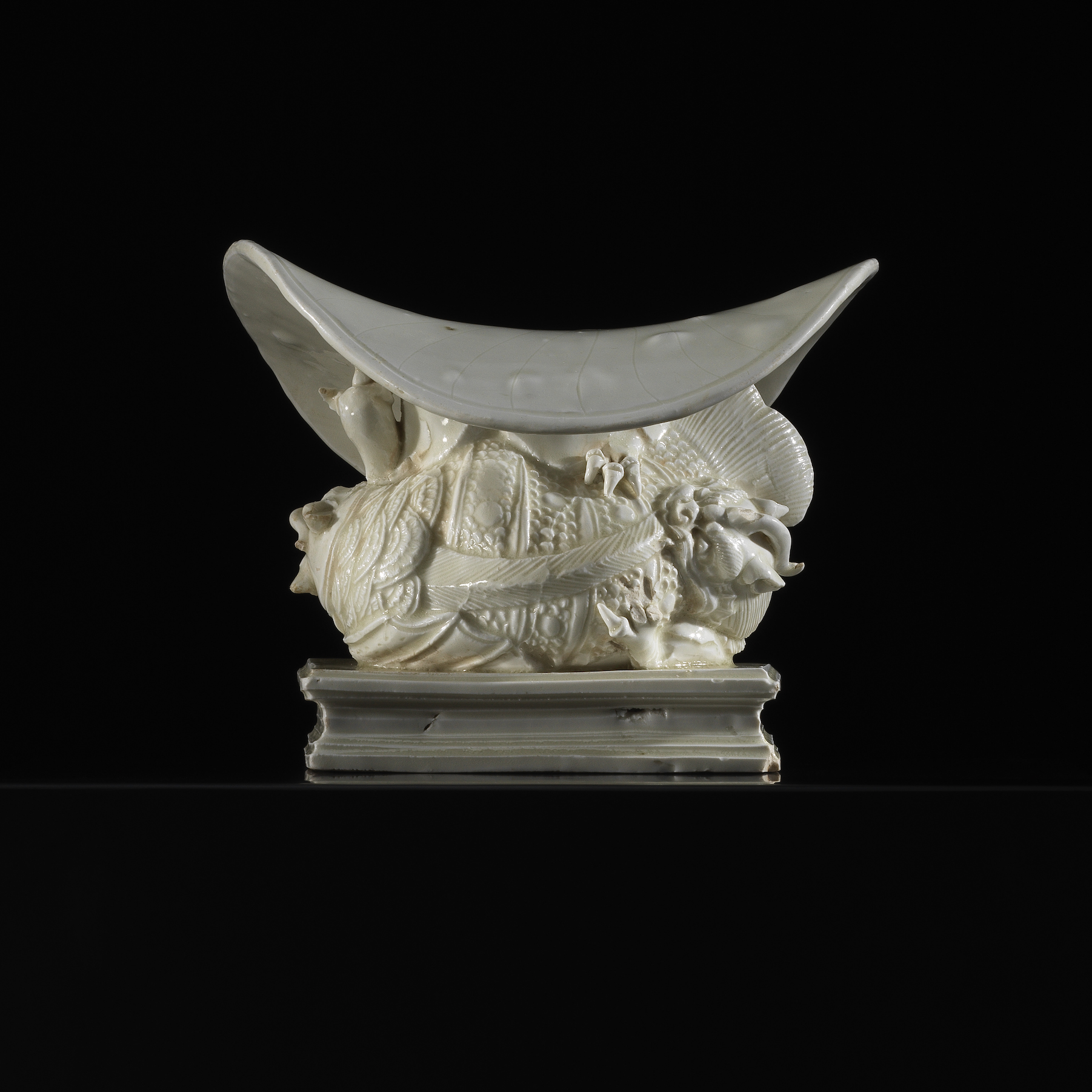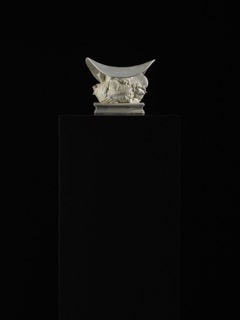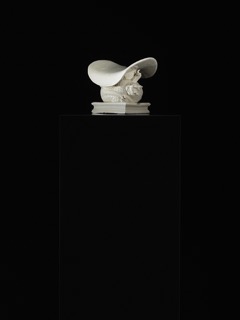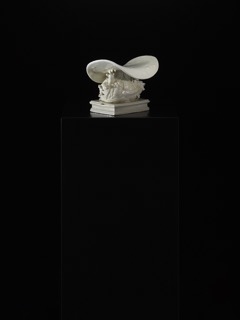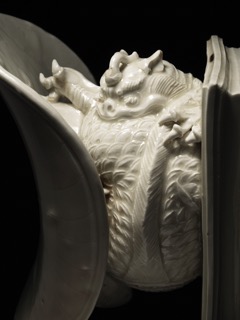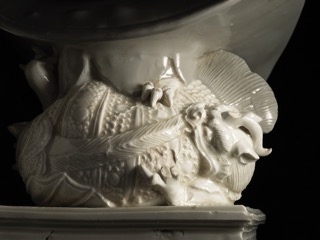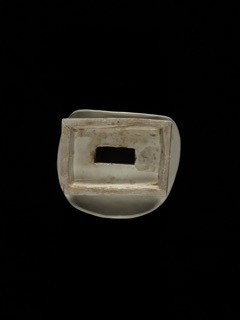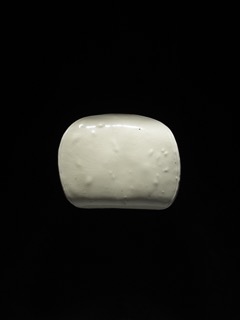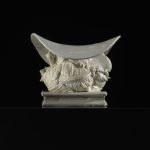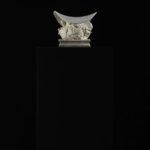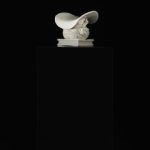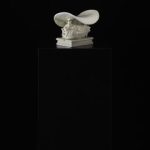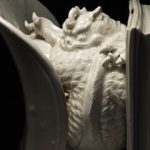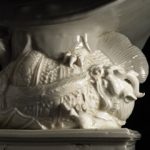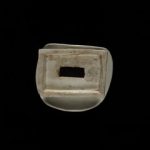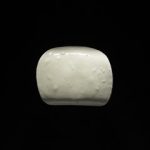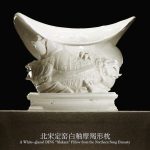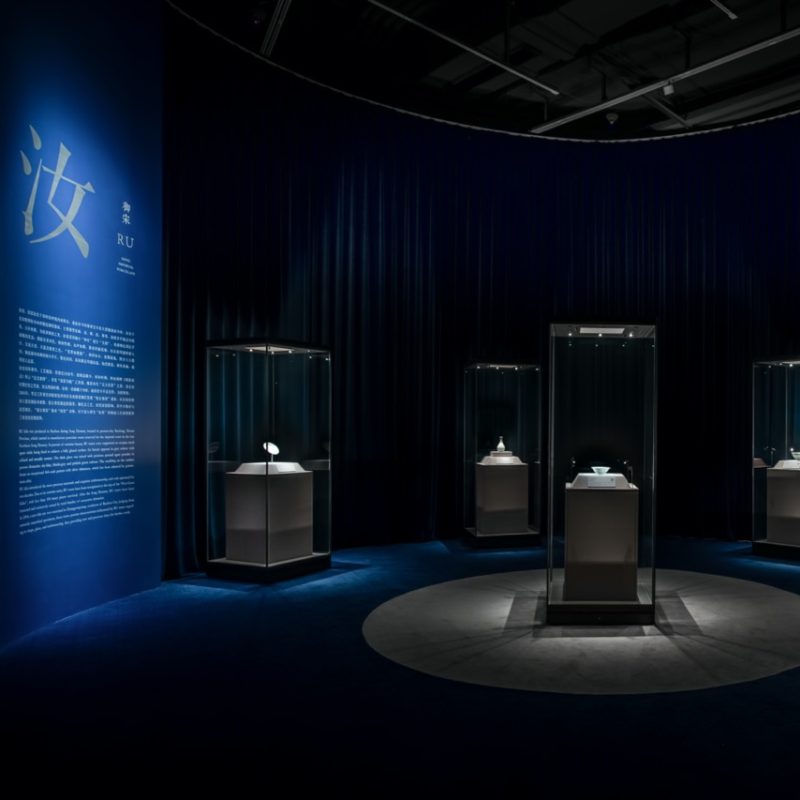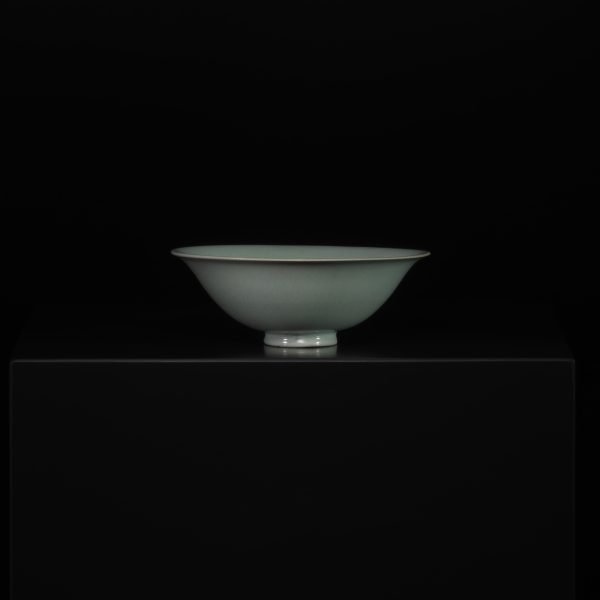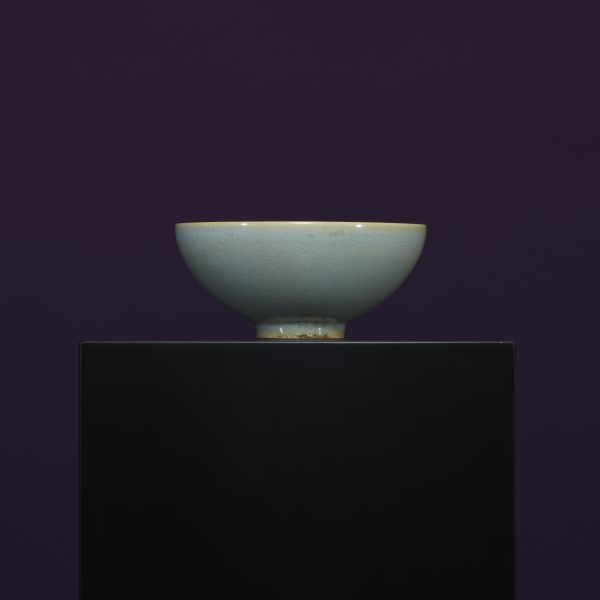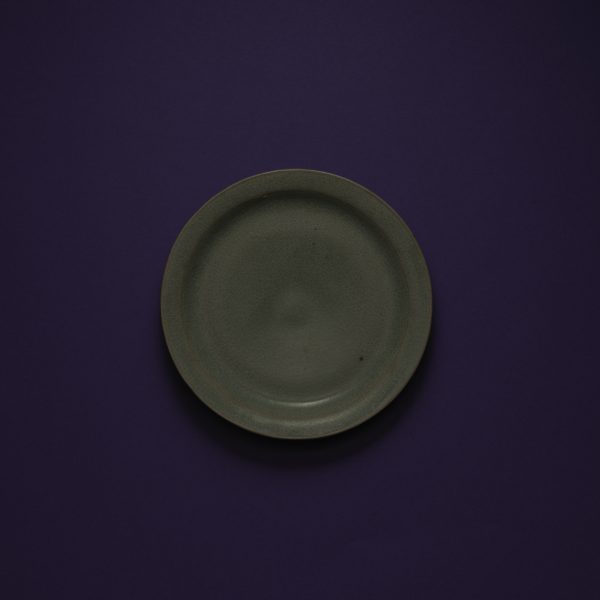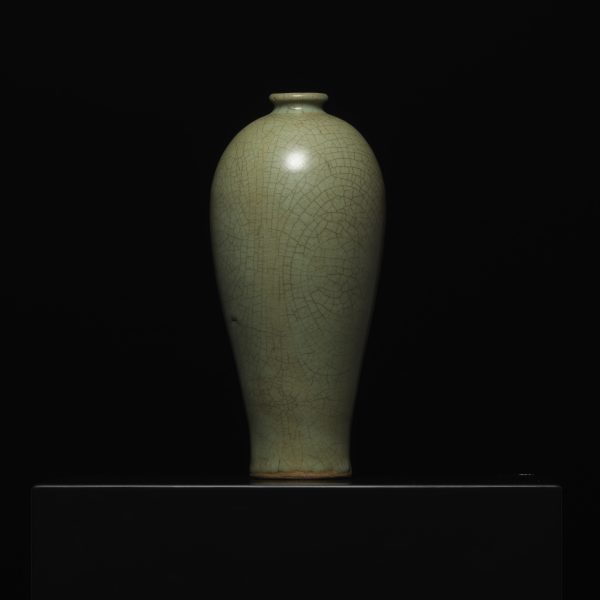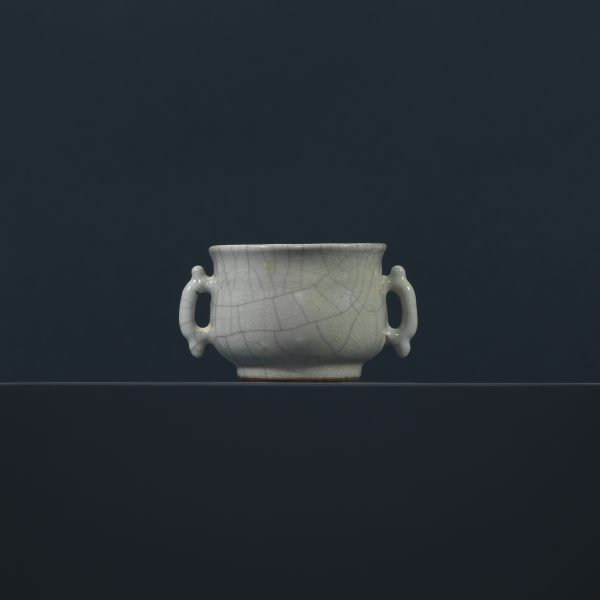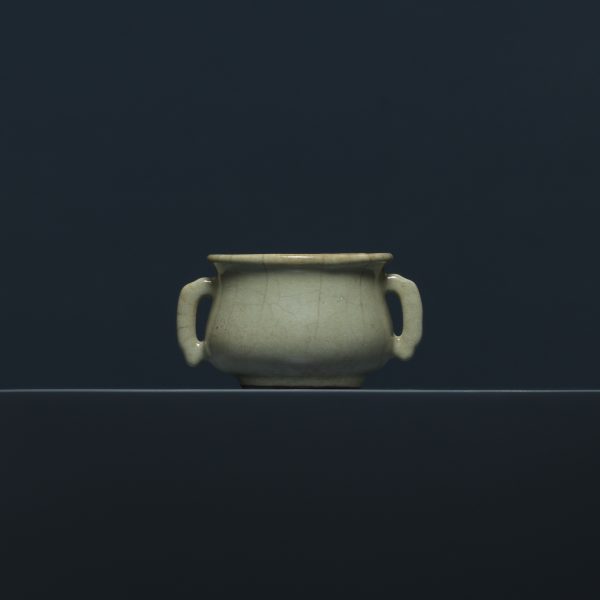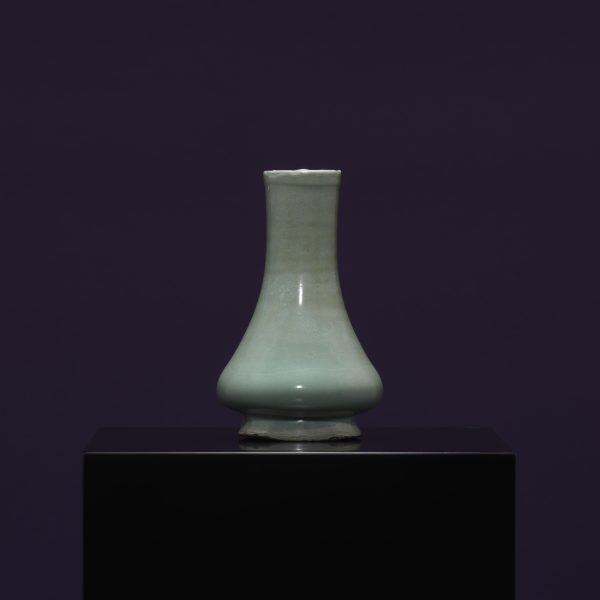A White-glazed DING “Makara” Pillow
Northern Song Dynasty
960-1127
- Object Type:ANCIENT CHINESE ARTCERAMICS
- Medium:Porcelain
- Year:Northern Song Dynasty (960-1127)
- Size:Height 15.50 cm, Length 19.50 cm, Width 16.00 cm
Description
The porcelain pillow is built with layers of sculptures and carvings: the headrest is made into a curled lotus leaf-shaped disc carved with vivid leaf veins and formed into a curve to fit the contour of human’s head and neck; it is supported by a sculpture of double-Makara biting each other’s tail, with a dragon’s head, pointed ears, a single horn, thick eyebrows and slanting eyes, broad nose and wide open mouth, with long hair covering its back, scales neatly arrayed across the body, and two fins flapping like wings, a fan-shaped tail bifurcated in the middle, two sharp claws seizing one another. A Sumeru-styled pedestal is delicately carved with layers of corbelling and with a girdled waist. It is covered overall in white glaze and carved in a rectangular piercing at the bottom, with a short foot ring leaving its white biscuit partially exposed.
Makara, in Sanskrit, meaning an Ancient Indian mythical water beast resembling crocodile on the appearance, adopted by Buddhism to represent the Fish King, and was introduced to China in the late Han Dynasty. In the Three-Kingdom Period, at the area of the State Wu, a monk once translated the Milinda Panha, saying: “a mythical fish lives in the ocean, known as Makara; it hit sailors’ boat and devoured them all, except for Milinda, who grabbed a plank and survived.” Later, the appearance of Makara gradually developed and was localized to the dragon-head and fish-tail form which also perfectly fit in the Chinese folk story of “fish-dragon transformation”.


